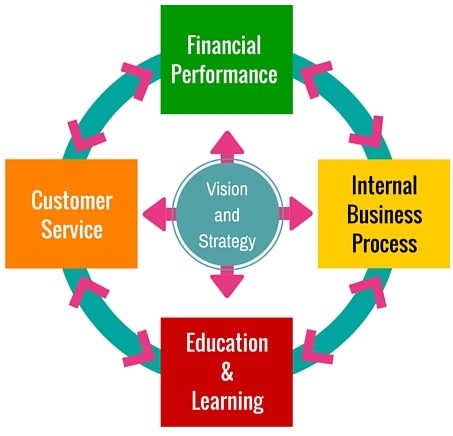A common performance management mistake made by supply chain operators, is trying to maintain and monitor too many KPIs. This can easily lead to the condition that’s sometimes known as analysis paralysis. If you are just starting out with the implementation of KPIs and want to avoid this particular pitfall, you might consider utilizing the “balanced scorecard” methodology, developed in the 1990s by Robert Kaplan and David Norton.
What is the Balanced Scorecard Methodology?
Kaplan and Norton’s balanced scorecard was not specifically intended for use in supply chain. However, this model of performance measurement has proven to be of value in just about every industry imaginable. In fact today, the balanced scorecard methodology has evolved beyond use as a measurement tool into a full-blown operational management model.
 That doesn’t mean you can’t simply apply the measurement aspect of the balanced scorecard though. The methodology is ideal as a framework for companies new to the implementation of KPI dashboards.
That doesn’t mean you can’t simply apply the measurement aspect of the balanced scorecard though. The methodology is ideal as a framework for companies new to the implementation of KPI dashboards.
In the balanced scorecard model, four sets of KPIs are linked to the strategic objectives of an organization. The four areas targeted are:
- Financial performance
- Customer service
- Internal business process
- Education and learning/training.
In case you’re wondering what the balanced part means, it’s the fact that rather than just measuring financials, (which is what a lot of companies were doing prior to the development of the balanced scorecard concept), the three other quadrants of the scorecard focus on measuring the non-financial aspects of a business operation.
Monitoring these other operational elements is important because financial indicators tend to offer a delayed view of performance. By measuring the other three areas, you will see problems much sooner. Therefore you can address the issues before they impact your organisation financially.
The Balanced Scorecard: Worth a Closer Look
The balanced scorecard methodology comprises a lot more than can be detailed in this short blog post. Suffice to say though, if you’re concerned about setting up a KPI structure providing meaningful measurements, without overwhelming you and your team with data, you should certainly take time to explore this particular management model in more detail.

This article is very useful